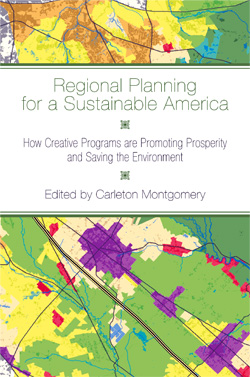Megaregions are very large interconnected urbanized areas in which populations are concentrated and bound together by transportation networks and job markets. A number of planners and academics are working to plan on this megaregional scale, arguing as a critical scale for planning because it better reflects the actual scale on which economic and social forces are operating than do traditional metropolitan areas. Scholars, industry representatives, activists and government officials have begun discussing challenges like sprawl control, transportation infrastructure, economic development, and housing on a megaregional scale. These megaregions cross multiple local government and state boundaries, providing both exceptional opportunities and exceptional challenges for planning.
Organizations:
Federal Highway Administration
Resources:
Richard Florida, Tim Gulden & Charlotta Mellander, The Rise of Mega-Regions
Federal Highway Administration, Megaregions Literature Review
Catherine Ross (ed.) 2009. Megaregions: Planning for Global Competitiveness. Washington, DC: Island Press.
Selected Reference:
Dewar, M. and D. Epstein. 2007. Planning for “Megaregions” in the United States. Journal of Planning Literature. 22(2):108-124.
Lang, R. and A.C. Nelson. 2007. The Rise of the Megapolitans. Planning: The Magazine of the American Planning Association. January 2007.
Martin Prosperity Insight. 2010. High Costs, High Speeds, Hidden Benefits: A Broader Perspective on High-Speed Rail. Rothman School of Management, University of Toronto.
Nelson, E. 2008. Bay Area Anchors Megaregion. Contra Costa Times. January 13, 2008.
Regional Plan Association. 2007. Northeast Megaregion 2050: A Common Future. New York Regional Plan Association.
Regional Plan Association. 2006. America 2050: A Prospectus. New York: Regional Plan Association.
Regional Plan Association. 1967. The Region’s Growth. New York: Regional Plan Association.

